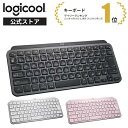I think that the one thing that mechanical keyboard users go through at least once is “miss-touching” due to differences in keyboard layout.
In particular, keyboards with a tenkey-less layout, such as a 75% layout, and with special keys arranged in a single row on the right side, tend to have a lot of “miss-touches,” even if you are used to them.
This article describes how to physically prevent miss-touching on mechanical keyboards.
Please watch to the end!
This page contains advertisements. Products and links provided by manufacturers may be included, but will be fairly verified and clearly disclosed in accordance with our editorial policy.

Representative of GreenEchoes Studio
/Editor-in-Chief of Greenkeys / Web Writer
Consistently responsible for interviewing, verifying, photographing, measuring, and writing all content.
We emphasize editorial independence and clear disclosure.
For review and PR inquiries, please see our media materials.
The deadline for the third round of Cornix LP pre-orders has been moved up to December 29 at 6:00 p.m. The deadline for the third round of
If you have any doubts, please do not hesitate to contact us as soon as possible.
Click here for a list of coupon codes ▷▷▷
View full list of articles ▷▷▷
Find a keyboard layout you like.
Typical example of a keyboard that would have a lot of typos and mistypes.
This is just a rule of thumb, but I believe that the keys that are frequently mistouched on mechanical keyboards are “keys that are frequently pressed with the right pinky finger.
A particularly frequent layout is the “75% layout” keyboard.
Let’s start with an example key layout.




Thus, the more keys that are omitted, the more keys that could not be omitted are consolidated on the right edge.
In particular, the “special keys” shown in green in the figure are placed in the right column.
If you look closely, you will notice that these special keys are located to the right of the “backspace key” and the “Enter key,” which are frequently typed.
…In short, you could say that the keys next to the “right hand pinky typing” keys are the “frequently miss-typed” keys.
And the keys that fit this criteria are limited to keyboards that are “more compact than 75% layout”.
Typical keyboards with frequent missteps are listed below.
75% layout





 河村
河村There is no concern about wrong input if the right row is physically independent, such as Keychron Q1/Q10/V1.
70% layout


65% layout





How to prevent typing errors on a mechanical keyboard
Here are three ways to “physically” prevent word strike.
- Remove the keycap.
- Remove the key switch → Install the key switch blocker
- Attach the key lock
- replace the keyboard
Remove the keycap.

The quickest solution to prevent word strike is to “make it impossible to press”.
Therefore, by removing the keycaps, it is possible to create an environment where the keycaps cannot be “pressed” to some extent.
However, the possibility remains that it could be pushed in any direction, and in addition, it is not aesthetically pleasing to the eye.
Remove key switch and install key switch blocker (recommended).

In addition to the above, if the entire keyswitch is removed, it is physically impossible to mistype.
However, in addition to being visually unattractive, the disadvantage is that dust can accumulate in the area where the circuit board is exposed.
Also, this method will not work unless the keyboard is hot-swappable.
If the keyboard is hot-swappable, it is most recommended to install a “key switch blocker”.

 Kawamura
KawamuraThis is a picture of the Keychron Q11 with the key switch blocker installed on the outer perimeter.
Thus, it is possible to use a 75% layout keyboard as if it were 65%.

It is available from Daraku-Neko’s Booth, so please give it a try!
Install a key lock (recommended!)

A method that can be used for keyboards that do not support hot-swapping is to install this “keylock”.
This would make it “physically impossible to press” without removing the keycaps and leaving the keyswitches in place.


The product is sold by “Dia Tech Corporation,” a company that sells keyboards and palm rests under the FILCO brand, and its reliability is outstanding.
However, this key lock cannot be used for low-profile key switches.
Note that the use is limited to “Cherry MX” key switches only.
In addition, note that the following keyswitches cannot be used.
Unavailable keyswitches
- Keys that are not 1U in size, such as Enter /Space /Shift
- ESC / Function keys Top row of etc.
Keyswitches not warranted for use
- Keyboards with Cherry MX compatible key switches
→This site is for introduction only. Please understand that we cannot guarantee the operation.
replace the keyboard
One way to do this would be to take the plunge and replace the keyboard.
Although it will no longer have mechanical key switches, the MX Mini can be typed very comfortably because the function keys are not arranged on the right side and it also has function keys.
Also, a keyboard with a 60% layout would be comfortable to type on, since there is no single row on the right side to begin with.
See the list of keyboards with 60% layout ▷▷▷
summary
The above has described how to physically prevent miss-touching during keyboard input.
It is still best to “get used to it”, but it is very difficult to correct long-standing habits….
In such cases, a “key lock” may be a good solution.
They were keyboard chips.
Tap the tag you are interested in
Article List Basekeys. Cannonkeys. Cerakey Chosfox Drop ELECOM Epomaker FKcaps Grovemade HHKB HHKB Studio Keycaps Hippokeys home-built keyboard Jezail Funder JezailFunder Kailh. KBDfans KeebPlus key (mahjong) Keyboardio Keychron key switch kirkette Logitech Mojo68 MONSGEEK NEWS Niuniu NuPhy OMNITYPE ONEPLUS PMD restrained style see the fluffy ones Sonnet split keyboard STOCK tadpole TEX trackball mouse WOBKEY. work louder YMDK ZENAIM






















